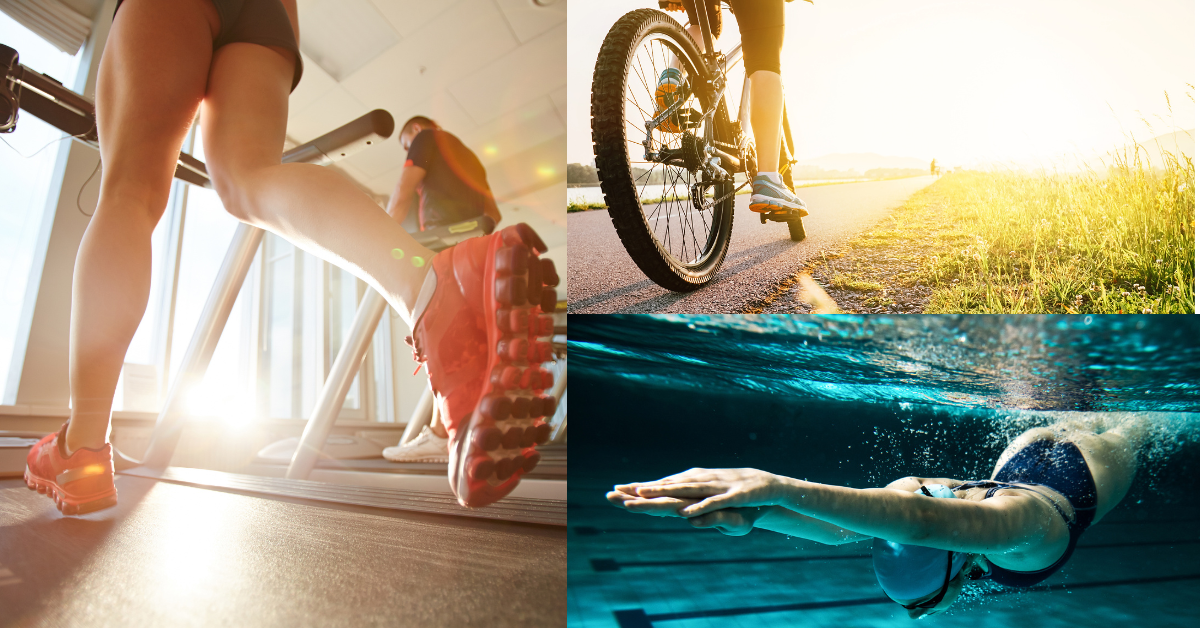Cardio doesn’t have to mean pounding pavement or sweating through punishing HIIT circuits.
If you’re looking to burn calories without the joint pain, impact overload, or mental resistance that often comes with “traditional cardio,” low-impact training is your ticket.
Whether you’re recovering from an injury, easing into movement, or just prefer workouts that don’t feel like punishment, these four options will get your heart rate up and keep your body feeling good.
Let’s dive in.
Why Low-Impact Training Deserves More Hype
When most people hear “cardio,” they picture endless treadmill miles or burpee hell. But that’s not the only way to train your heart, lungs, and metabolism.
Low-impact cardio still elevates your heart rate, burns calories, and improves endurance—but without the harsh stress on your joints. It’s also easier to recover from, which means you can do it more often (and more consistently).
TL;DR: If your workouts are wrecking your body, it’s not a badge of honor—it’s a red flag.
Low-impact = longevity. And that’s what we’re here for.

1. Walking
Simple? Sure. But don’t mistake that for ineffective.
Walking is one of the most underrated fat-burning tools out there:
- It’s easy on the joints
- It promotes daily movement consistency
- It supports recovery between harder sessions
- And yes: it burns calories
Add a weighted vest, walk on an incline, or extend your duration, and you’ve got a metabolic machine that doubles as a mental reset.
Bonus: Walking after meals helps with blood sugar regulation and digestion. So yeah, it’s not just “better than nothing” – it’s strategic.
2. Swimming
Swimming is cardio, strength training, and meditation all rolled into one.
- Works nearly every major muscle group
- Boosts lung capacity and cardiovascular health
- Zero joint impact
- Great for fat loss and full-body toning
Whether you’re doing laps, water aerobics, or just floating with intention, swimming is a high-return, low-risk option for calorie burn and muscular endurance.
If you’re dealing with pain or rehabbing an injury, this one’s your best friend.
3. Hiking
Need a step up from walking but not quite ready for plyos and sprints? Hit the trail.
Hiking offers:
- Natural resistance via incline and uneven terrain
- Mental benefits from being in nature
- Low-impact training with legit caloric burn
- Enhanced glute and hamstring activation
The bonus? You don’t feel like you’re exercising. You’re just out moving your body, getting sun, breathing fresh air, and leaving your phone in your backpack.
That’s a win all around.
4. Cycling
Whether you’re on a road bike or a stationary one, cycling delivers serious results with minimal joint stress.
- Builds lower-body endurance and strength
- Boosts cardiovascular output
- Easy to adjust intensity
- Great for interval-style training or steady-state work
For people with knee pain or post-injury concerns, cycling can offer a controlled, repeatable way to reintroduce intensity without risk.
Bonus points if you can swap your commute for bike time: more movement, less time stuck in traffic.
Final Takeaway
Low-impact doesn’t mean low results.
If you’re trying to burn calories, stay active, and support recovery (without grinding yourself into the ground), these four tools should be in your rotation.
They’re approachable, effective, and – dare we say – actually enjoyable.
And when movement feels good? You’ll do it more.
And when you do it more? Your results stick.